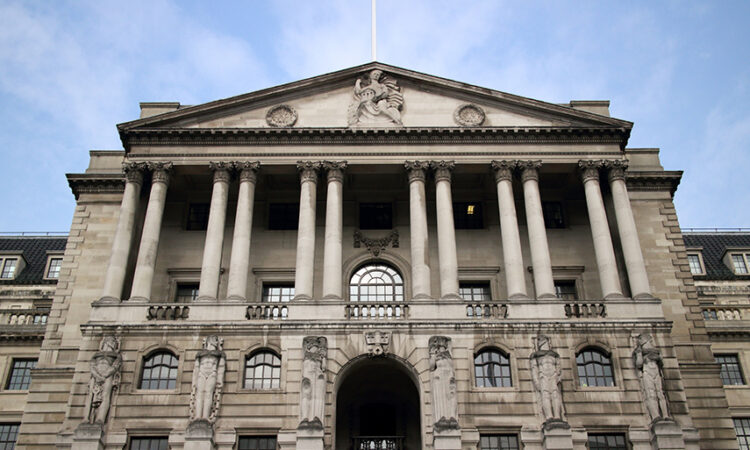
It’s a far cry from last year’s forecasts. Simply look at October’s estimated forecast, where rates were expected to stay above 5% up until quarter three of 2024 – falling to 4.78% by the year-end.
The latest estimated yield curve from the BoE paints a different picture (3 January). Rates are now expected to fall to 4.65% by the year-end.
Although that’s good news for investors and households alike, they can’t breathe a sigh of relief just yet.
That’s because this ‘higher for longer’ rate environment doesn’t seem to be going anywhere. Look at the estimated figures from the Bank and you’ll see that interest rates are expected to stay at over 3% well past 2027.
It’s a major contrast to the post-financial crisis the world adapted to in 2008, where low interest rates became commonplace. Some would even argue, artificially low.
What’s the mood at the Bank of England?
Of course, the data is integral to the rate story, but it’s also important to observe the mood at the central bank.
For now, Bailey, the governor of the Bank, has kept shtum about any rate falls. He has – understandably – remained hawkish for many months now.
And who can blame him? UK inflation has proved to be stubborn. In November, UK inflation fell to 3.9%, down from 4.7% in October – still nearly double the Bank’s 2% target.
Although some have criticised the Bank for being too hawkish, the Bank’s Monetary Policy Committee (MPC) is still open to the idea of hiking rates further if necessary.
The Committee includes the governor, three deputy governors for monetary policy, financial stability and markets and banking, the chief economist and four external members, appointed by the Chancellor.
In its last meeting, three of its nine members voted to raise rates to 5.5%.
So, what will the mood be like in 2024? Well, the central bank will have to be careful about how they communicate upcoming monetary policy. Every word will be inspected closely by markets.
That means keeping a united front and no slip ups. Last November, there was tension between Huw Pill, the chief economist, and the Bank as he hinted that there may be rate cuts in mid-2024.
But Pill set the record straight and said that the central bank “couldn’t afford to ease off tight monetary policy, even if it sees signs of weakening economic activity.”
This theme may well filter into 2024. The Bank will no doubt continue to monitor economic data releases. The latest inflation data for December will come out on 17 January. This figure will likely guide the next rate decision on 1 February.
What’s Fidelity’s view?
Ed Monk, associate director at Fidelity International, said: “The Bank continues to talk tough on the risk of inflation, but the data show price rises have been falling, and falling more quickly than most expected. That suggests rate cuts will begin soon but exactly when is very difficult to say.”
“Inflation remains at 3.9% – twice the Bank’s target – so we may need to see that headline figure fall further before enough MPC members are persuaded to vote for a cut. The market expects several cuts this year and for them to begin as soon as the spring. That may be optimistic – summer 2024 looks more realistic.”
As mentioned above, some would argue that interest rates have been artificially low for a long period of time.
Ed compared monetary policy to driving while looking in the rear-view mirror.
“You don’t know if you’ve done the right thing until you’re living with the consequences. As such, it’s harsh to slam the Bank for keeping rates too low ahead of the inflation crisis sparked by Russia’s war on Ukraine.”
“Multiple factors have led to the UK experiencing a sharper bout of inflation than its counterparts around the world. Low rates in previous years are one of them but a tighter labour market and a weakened currency have also made things worse.”
With markets pricing in five rate cuts this year, they may well be too optimistic about rate cuts.
“Five quarter-point rate cuts could take the Bank rate to 4% by the end of 2024. That’s further than the Bank itself has indicated but the central bank has been consistently more hawkish than the market – perhaps for good reason. If the first cut comes before the summer then five might be possible, but the Bank is likely to proceed with more caution than that. Three of four cuts may be where we end up.”
World’s largest economy also faces ‘higher for longer’
Since the US has the largest economy in the world, the goings on at the US’s central bank – the Federal Reserve is important.
Recently, the Fed hinted at a ‘higher for longer’ environment.
Fed officials “reaffirmed that it would be appropriate for policy to remain at a restrictive stance for some time until inflation was clearly moving down sustainably toward the Committee’s objective”.
Still, it appears markets continue to be optimistic. According to the Financial Times, futures markets continued to price in roughly six interest rate cuts in 2024. It comes at odds with the Fed’s “dot plot” projects which indicate just three cuts.
Unlike Bailey, Fed chair, Jerome Powell has adopted a more dovish tone. That’s because the US’s challenge to tame inflation has so far been more triumphant than the UK. The US has achieved the strongest growth of any large economy, unemployment is close to record lows and price pressures are slowly returning to the bank’s 2% target.2
All in all, markets are pricing in cuts on both sides of the cuts. But the Bank of England’s challenge is arguably greater than the Federal Reserve’s.
Sources
1 The Times, 2 January, 2024
2 The Financial Times, 28 December 2023





